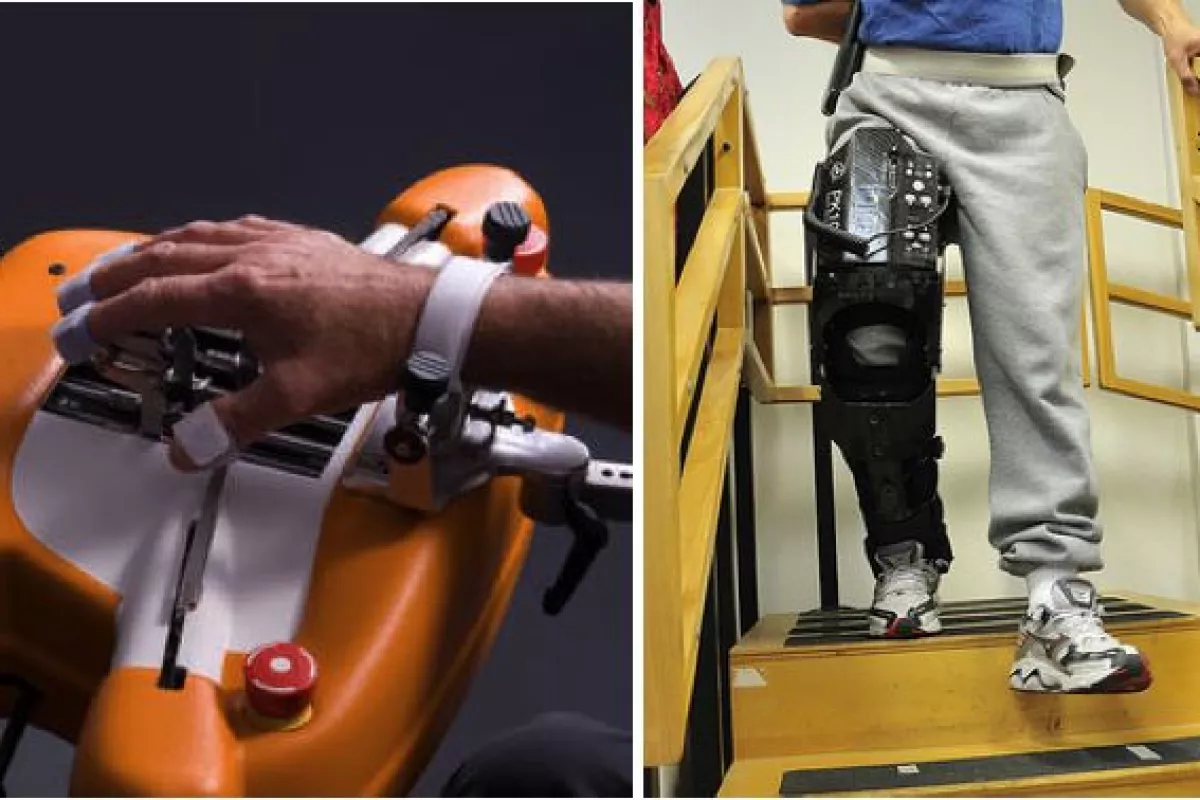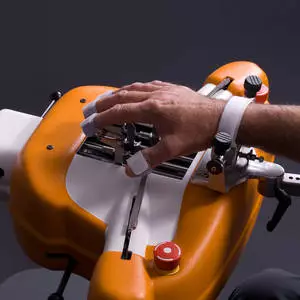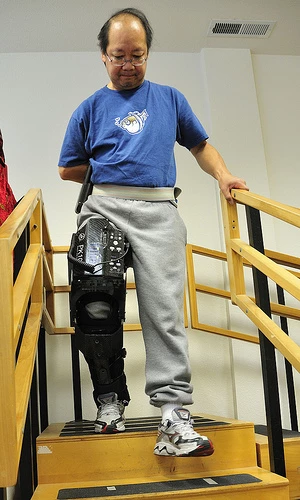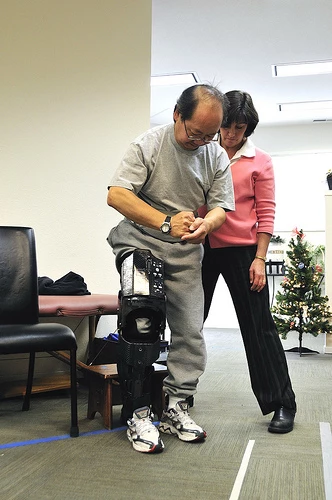It's a long time since The Six Million Dollar Man graced our TV screens; indeed, many Gizmag readers may be too young to have heard of Steve Austin, the Bionic Man. Bionics and robotics have come a long way in the past few years, and while we're not yet creating bionic men and women, we can at least claim to make people "better, stronger, and faster." A robotic hand and bionic leg undergoing clinical trials at New York-Presbyterian Hospital/Columbia University Medical Center (NYPH/CUMC) are two promising neurorehabilitation devices that are helping stroke survivors regain movement in affected limbs by rewiring neural pathways.
Stroke is one of the top three killers in the developed world. Of those who survive, hundreds of thousands are left with devastating disabilities such as the loss of movement in an arm or leg, and the accompanying loss of freedom of movement they had taken for granted. Not so long ago these disabilities were considered incurable and therapy often focused on training people to use their "good side."
Fortunately, research has provided new insights into the brain and its ability to reorganize or "rewire" itself by forming new neural pathways which bypass damaged areas - the science of neuroplasticity. Neurorehabilitation harnesses the principles of neuroplasticity, and has produced some remarkable improvements in survivors of stroke and other brain damage.
Trials like those being conducted at NYPH/CUMC involve patients in repetitive movements that promote motor learning and neuroplasticity in affected limbs.
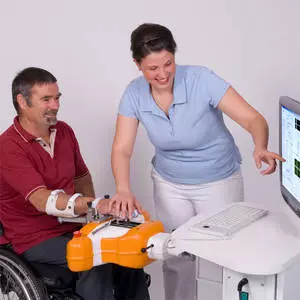
Amadeo Robotic Hand
The Amadeo, developed by medical engineering company Tyromotion, is the first device to focus specifically on hand rehabilitation and allows the patient to move each finger individually. The mechanism mimics the hand's natural grasping movement, making the patient's hand move with it. The range of motion and the force can be exactly adjusted to the patient's needs.After attaching the finger tips to the finger and thumb carriages, patients move their fingers along small tracks to a set endpoint in an automated sequence. Patients can be actively or passively involved, and motor control and strength are increased over time.
Lauri Bishop, a research physical therapist in the Department of Rehabilitation and Regenerative Medicine at NYPH/CUMC says, "Traditionally hand rehabilitation has been done by having patients practice movements like buttoning a shirt. The robot makes this process more efficient. It also makes it easier to track a patient’s progress."

Tibion Bionic Leg
The Tibion is a thigh-to-ankle device worn during therapy to help patients get their stroke-weakened leg to work with their unaffected leg in walking, climbing stairs and getting in and out of chairs. Sensors in the patient's shoe and the Bionic Leg collect data that is fed into a computer to determine what the patient is likely trying to do, and essentially customize the sensor network to the patient's way of walking. The Bionic Leg can be configured to either assist or resist the patient's movements, and therapists can progressively reduce the level of support provided until patients are able to move confidently without it.
"Prior robotic devices for helping patients improve their gait involved either therapists or robots moving the affected leg while the patient was suspended over a treadmill," says Ms. Bishop. "This bionic leg requires the patient to put weight on the affected leg, and to try to take steps on their own. The device isn’t a prosthesis, it simply supports the patient while our therapists help them teach new areas of their brain to replace the stroke-affected areas that normally control leg function."
Dr. Joel Stein, director of the Rehabilitation Medicine Service and Physiatrist-in-Chief at NYPH says, "The devices systematically help restore neural pathways for crucial movements like walking and gripping. By doing so, patients can regain freedom and independence and move on with their lives."
The hospital is seeking people who have been recovering from a stroke for six months or longer, who have difficulty with hand functions or mobility, to take part in the clinical research trials. If interested, email Lauri Bishop or call (212) 305-6095.
